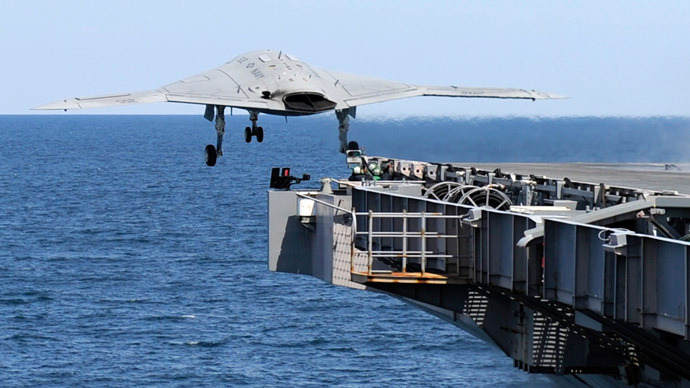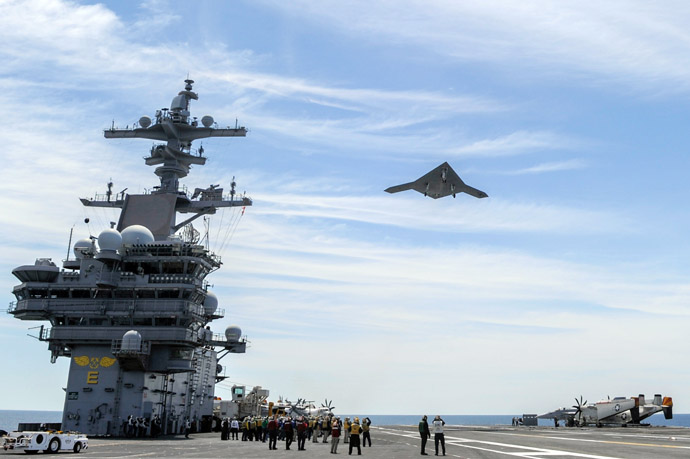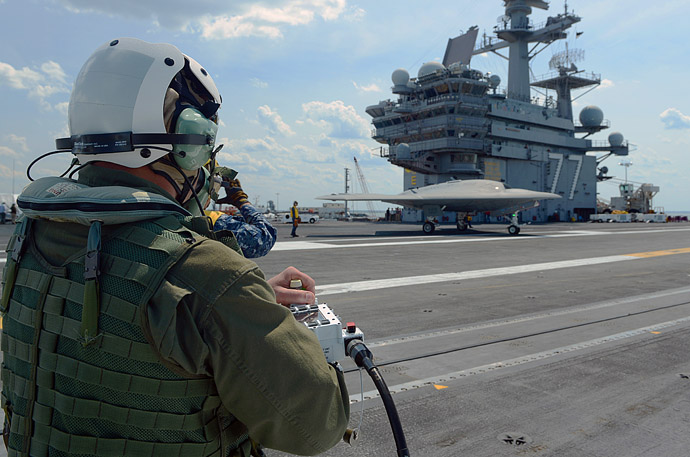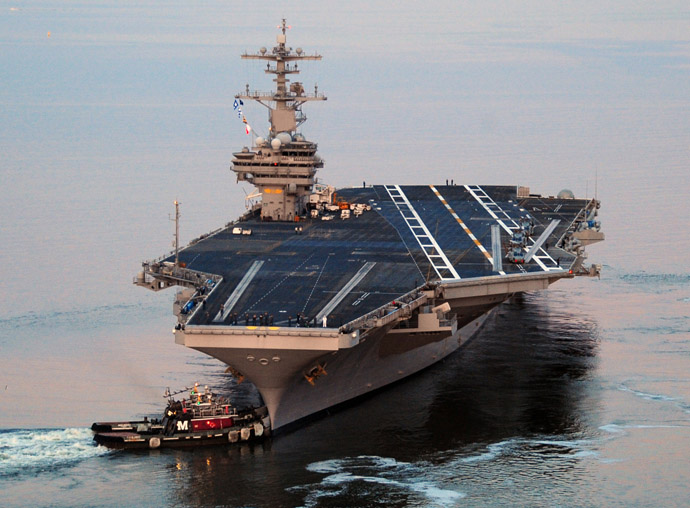US Navy launched its first drone from aircraft carrier

The US Navy has successfully catapulted a prototype drone from an aircraft carrier on Tuesday, which is the first step in a program designed to begin fielding drones on all Navy carriers between 2017 and 2020.
The flight serves as a milestone for the future of drone
aviation, and US Navy officers have celebrated the success of its
launch. But the flight of the unmanned aircraft, which is the
size of a fighter jet, is likely to become the subject of
criticism from those who believe drone usage hurts the US image –
especially since drones are behind many civilian deaths on
foreign grounds.

Critics have already condemned the Navy’s $1.4 billion drone prototype program, relaying their concerns over the development of weaponized systems in which humans will have even less control over when it comes to launching attacks.
Human Rights Watch has particularly protested the development of drones that carry weapons and are fully autonomous, like the X-47B unmanned aircraft that the Navy launched from the USS George H.W. Bush on Tuesday. This unmanned aircraft can reach an altitude of more than 40,000 feet and has a range of more than 2,100 nautical miles, the Associated Press reports.

This model is particularly valuable because it has the capability
to take off and land on an aircraft carrier. Developing such
drones would allow the US to launch strikes from anywhere in the
world, regardless of whether or not a foreign country allows the
US on its grounds.
The drone is fully autonomous in flight, and relies on computer
programs to direct it – unless an operator programs it to operate
otherwise. Most drones currently employed by the military fully
rely on operators to control it from a remote location.
While the X-47B is only intended for testing purposes rather than
operational use, the Navy will use it for research purposes to
develop advanced unmanned aircraft for use in future conflicts.
When it comes to using lethal force, the X-47B still requires
human approval. But Human Rights Watch believes the prototype
research will lead to the development of drones that conduct
deadly attacks with no human intervention.

Steve Goose, director of the arms division at Human Rights Watch,
expressed some of his fears with AP.
“For us, the question is where do you draw lines?” he
said. “We’re saying you need to draw the line when you have a
fully autonomous system that is weaponized. We’re saying you must
have meaningful human control over key battlefield decisions of
who lives and who dies. That should not be left up to the weapons
system itself.”
But despite fears over the future of fully autonomous drones that
can launch deadly attacks from aircraft carriers, the Navy is
hailing the flight of its prototype as a success it has long
sought.
“US Navy history is made!” the Navy wrote from its
official Twitter account. “Was airborne at 11:18A. More to
come.”
The Navy plans to release videos and photographs of the event,
which Read Adm. Mat Winter wrote marks “an inflection point in
history on how we will integrate manned and unmanned aircraft on
carrier flight decks in the future.”














